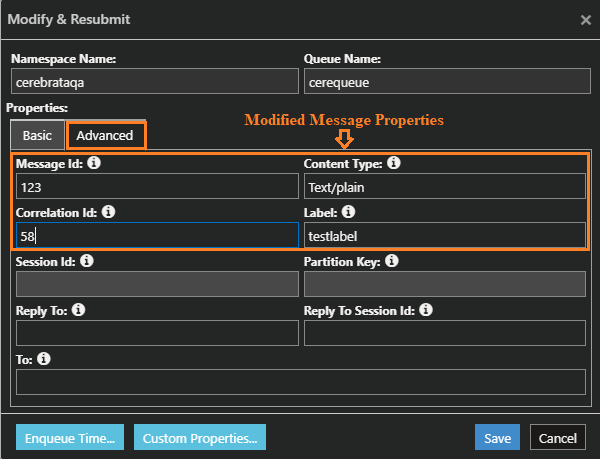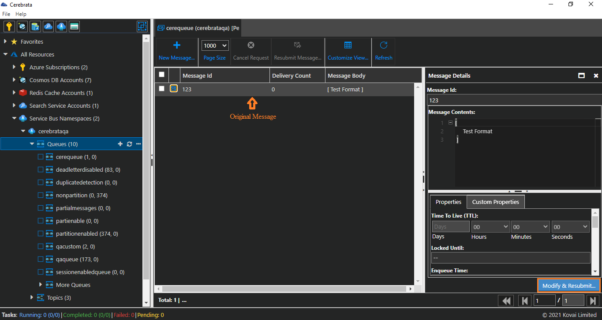

Var receiver = client.CreateReceiver(queueName, new ServiceBusReceiverOptions Var client = new ServiceBusClient(connectionString) Here's one such logic I've implemented in dot net using the latest version of Service Bus SDK. You can use the record headers in a DLQ topic record. Then you can receive the messages in your main queue whose session id is in the DLQ, and then move those messages to DLQ. Instead, the connector continues processing records and sends the errors to a Dead Letter Queue (DLQ). You can first peek the messages in your dead-letter queue to fetch all the session ids. No, there is no such offering by Service Bus by default.

the number of dead letter messages, and the byte size of the queue.

The reason I would like to do this is because I've set up. New Relics Microsoft Azure ServiceBus integration: what data it reports and how to. In particular, this value is called DeadLetterMessageCount and you can find out this by right-clicking the 'Properties' of the SB queue in the Server Explorer of your project (in case of using a SB queue). I would like to know if service bus offers the possibility that if there is a message in the dead letter queue all the messages in the session queue that have the same sessionId go to the dead letter queue. I would like to delete the Dead Lettered messages from the service bus queue. Is there a way to configure azure service bus so that if there are any messages in the dead letter queue it sends all messages with the same sessionId to the dead letter queue? I can think of several ways to control this, for example that the support team looks at the status of the order before reprocessing the message from the dead letter queue :) but I would like to know if service bus offers the possibility that if there is a message in the dead letter queu all the messages in the session queue that have the same sessionId go to the dead letter queu. The message in "sent" status is processed correctly and then when the support team re-sends the "Pending" or "Received" status message to the queue it is processed correctly marking the order in a previous status instead of "sent" ". So far it works perfectly, the problem I have found is when a message in "pending" or "Received" status fails due to a timeout and goes to the dead letter queue. therefore I have grouped the messages by the "SessionId" service bus option, setting the orderId as sessionId so that it processes the messages in order in case of horizontal scaling. I work on an order application with the following states "Pending", "Received" and "Sent". This sub-queue does not need to be explicitly created and cannot be deleted or otherwise managed independent of the main entity. I am working with an azure service bus queue configured to be FIFO (First input first output). What is a Dead-Letter Queue All Service Bus Queues and Subscriptions have a secondary sub-queue, called the dead-letter queue (DLQ).


 0 kommentar(er)
0 kommentar(er)
